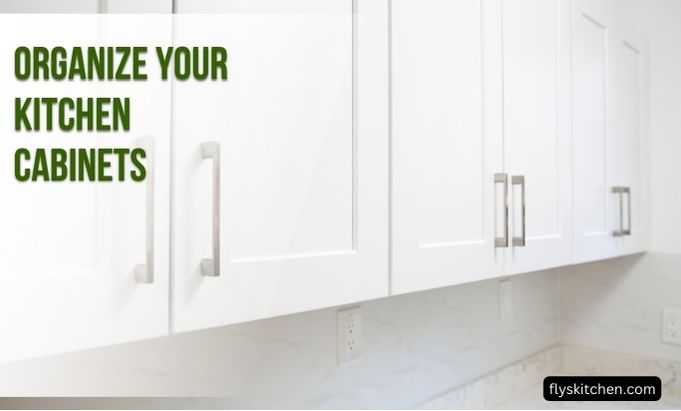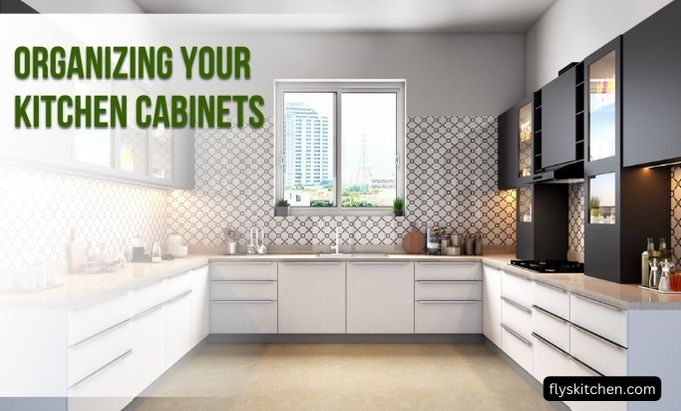Kitchen cabinets play a crucial role in any kitchen. Not only do they provide storage space for all your cooking essentials, but they also contribute significantly to the overall aesthetic of your kitchen. Messy, disorganized cabinets can make your kitchen look cluttered and feel stressful. On the other hand, a kitchen with organized cabinets appears clean, tidy, and inviting.
If your kitchen cabinets need some organization TLC, this comprehensive guide will walk you through the entire process of decluttering, categorizing, and optimizing your cabinet space. With some planning, effort, and the right organizational tools, you’ll be able to transform your chaotic cabinets into a functional storage solution.
Why Organize Your Kitchen Cabinets?

Before jumping into the how-to steps, let’s first go over the key reasons for organizing your kitchen cabinets:
- Saves time – Know exactly where everything is located, avoiding the frustration of rummaging to find items.
- Maximizes space – Strategic organization ensures every inch of cabinet real estate is optimized.
- Looks clean and tidy – Organized cabinets contribute to an orderly, uncluttered aesthetic.
- Improves cooking efficiency – Quick access to cooking tools and ingredients helps cooking go smoothly.
- Reduces expired items – Regular purging of old items prevents wasteful buildup.
- Provides peace of mind – Eliminates cabinet clutter stress and chaos.
Follow this complete guide to experience all of these benefits and more in your own kitchen.
Step 1: Empty the Cabinets This crucial first step gives you a blank slate to work with. Take everything out of your cabinets – all food items, cookware, small appliances, etc. As you remove items, get rid of anything expired, duplicate items you don’t need, or items you don’t use regularly.
Step 2: Clean the Cabinets Here’s your chance to give your cabinets a deep clean.
- Remove shelves, drawers, and any cabinet inserts. Clean all surfaces with a multi-surface cleaner and microfiber cloth.
- Use a vacuum attachment to remove any dust, crumbs, or debris inside cabinets.
- For wooden cabinets, treat with a wood polish to revive and protect the wood.
- Replace any worn shelf liners.
Step 3: Categorize and Consolidate Now you can see everything that was once crammed into your cabinets. Sort all items into logical categories, such as:
- Cookware (pots, pans, lids)
- Baking essentials (mixing bowls, baking sheets, muffin tins)
- Small appliances (mixer, blender, food processor)
- Dishware (plates, bowls, mugs)
- Glassware (wine glasses, tumblers, pitchers)
- Serving ware (platters, trivets)
- Food storage containers
- Spices and dried goods
- Canned goods
As you sort, look for opportunities to consolidate. For example, transfer spices from their boxes into matching canister sets. This not only saves space but also looks uniform and neat. Combine multiples of the same item, like several boxes of pasta or baking soda, into one large container.
Get rid of any duplicate, unneeded items taking up space. Be ruthless in your purging!
Step 4: Strategize Your Cabinet Organization Now for the fun part – mapping out your dream organized cabinet system! Grab a notebook and pencil to jot down ideas as you stand in your kitchen and analyze your cabinets.
Consider these factors as you develop your plan:
- Your kitchen layout and cabinet configuration
- The categories you identified in the previous step
- Which items you use most frequently
- Your personal preferences and cooking style
You’ll likely designate specific cabinets or shelves for broad categories like food storage, dishes, appliances, etc. Then organize the items within those cabinets by frequency of use, with most used items on lower shelves for convenient access.
Be sure to designate prime real estate in corner cabinets or lazy susans for small items that can get lost, like spices. And don’t forget the famous “junk drawer” for miscellaneous tools like scissors, batteries, tape, pads, and manuals.
Step 5: Purchase Organizing Tools and Accessories Head to the store to pick up whatever you need to execute your cabinet organization system. Here are some of the most useful products to have on hand:
- Cabinet organizers such as lazy susans, shelf dividers, and pull-out drawers
- Food storage containers in different sizes
- Spice racks
- Canisters, jars, or other uniform containers
- Cabinet door racks for pans or baking sheets
- Drawer organizers and compartments
- Labels and chalkboard labels
- Storage baskets or bins
Pro tip: Measure your cabinet shelves before shopping to ensure any organizers you buy fit properly.
Step 6: Install Organizers and Fill Cabinets Now for the best part – transforming your organization plan into reality! Refer back to your notes as you install any cabinet organizers, shelving, racks, etc. in their designated spots. Then strategically fill cabinets by category according to your plan.
Use labels on shelves, drawers, or containers to clearly designate where everything belongs. This maintains organization as you put items away each time.
Step 7: Maintain the Organization
Congratulations, your kitchen now looks and functions better than ever! But your work isn’t done yet. Maintaining organization is just as important as the initial work you put in. Here are some tips for keeping your cabinets in order:
- Put items back immediately after use. Don’t let clutter accumulate again.
- Regularly purge expired or unneeded items. Don’t let them take up valuable real estate.
- Clean cabinets out fully once per season. Start fresh each season by removing everything, cleaning, re-categorizing, and reorganizing.
- When adding any new pieces, immediately determine their organizational “home” based on your categories.
- For pantries, use the FIFO (first-in, first-out) method to rotate older food items to the front.
Follow these habits, and your kitchen cabinets will remain a functional, clutter-free zone.
Frequently Asked Questions
Still, have some lingering questions about organizing your kitchen cabinets? Here are answers to some common FAQs:
How do I organize my pots and pans?
Use vertical organizers or racks inside cabinets to store pots and pans upright. Place your most-used pans on lower racks for convenient access. Pan lids can go in a separate vertical rack, drawer organizers, or on cabinet door racks.
How should I arrange my pantry?
Categorize by food type – pasta and grains, canned goods, baking essentials, etc. Place most-used items at eye level. Use clear containers to easily identify contents. Rotate older items to the front.
Where should I put my everyday dishes and glassware?
Daily-use dishes and glassware should go in cabinets closest to the dishwasher or sink for efficient unloading. Place mugs on hooks for visible organization.
How often should I clean my cabinets?
Do a deep clean of cabinet interiors at least once per season. Quickly wipe surfaces about once per month to remove grease, dust, and debris.
What’s the best way to organize spices and dry goods?
Use matching containers, canisters, or spice racks to neatly organize and display spices and dry goods. Alphabetize spices for easy locating. Store less-used items up high or in the back.
Organizing your kitchen cabinets is a rewarding project that uncomplicates your cooking. Follow this guide to maximize your cabinet storage, operate more efficiently, and simply enjoy cooking in a decluttered space. Which tips are you excited to implement first? Let the organizing begin!

